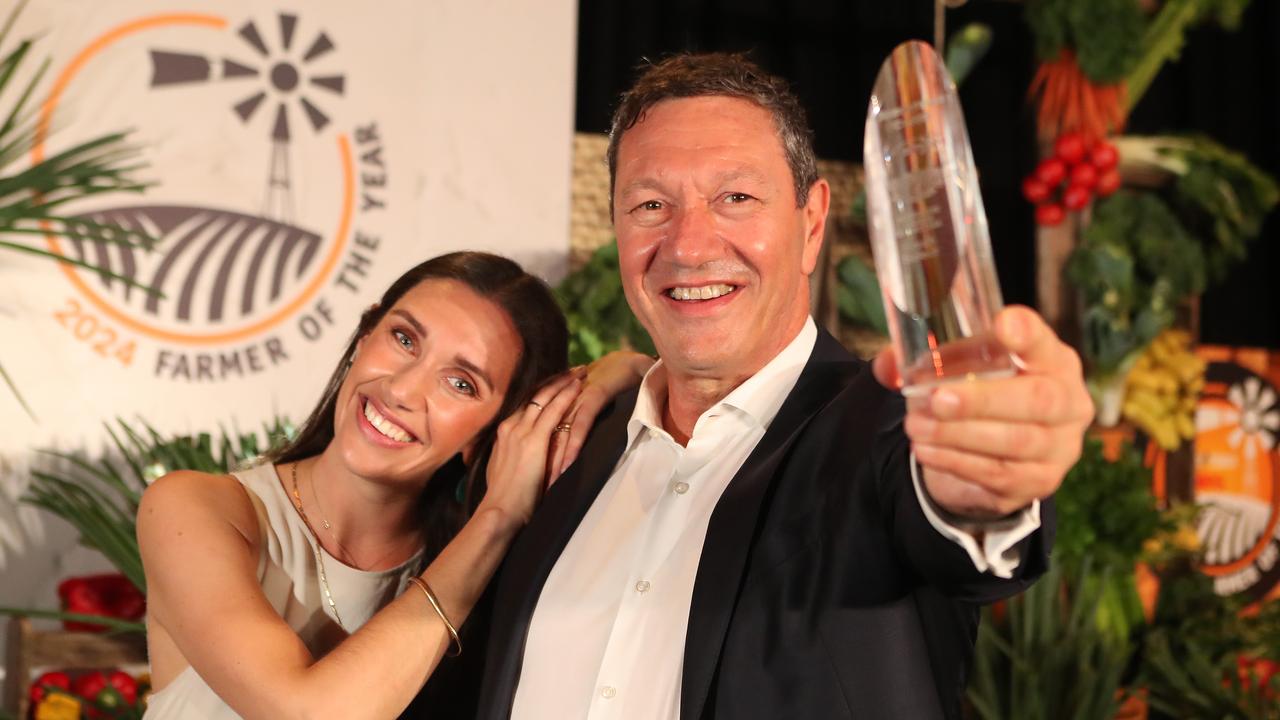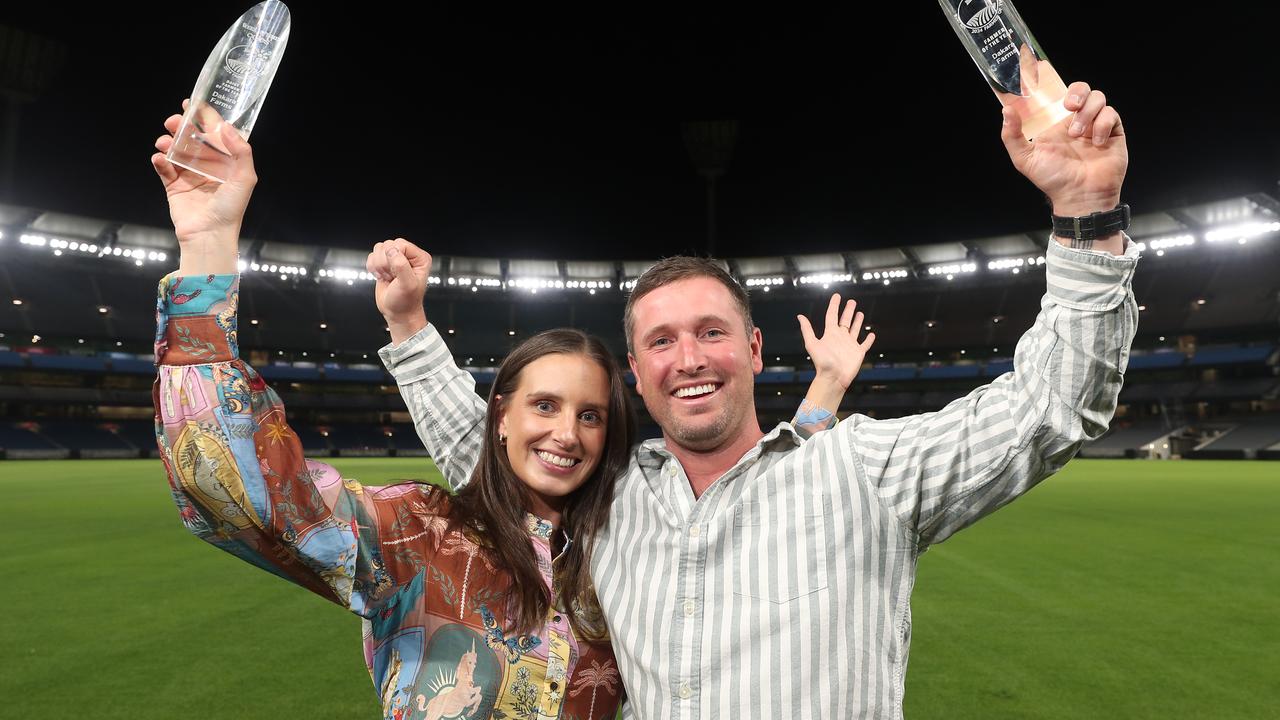Killa plan produces top finish
THE ability to turn off 500-600 heavy steers each year off just 400ha in a 700mm rainfall needs a careful formula.

THE ability to turn off 500-600 heavy steers each year off just 400ha in a 700mm rainfall needs a careful formula.
All animals must perform and property management must be spot-on to ensure this is possible.
And a top-shelf operation on a property in the NSW Wantagong Valley, midway between Holbrook and Jingellic, is doing exactly that.
It’s run by Oliver Killalea, together with his son, Tony, and daughter-in-law, Marg, and their 15-year-old daughter, Sophie.
Despite highly improved pastures, a heavy fertiliser regime and careful management, the Killaleas understand the property is smaller than the average holding in the district.
That’s why they leave nothing to chance when running a herd of about 120 cows, a Poll Dorset stud and trading up to 600 steers each year.
The backbone of the operation is cattle trading.
They buy in steers in late autumn and aim to put enough weight on them to turn off at up to 550kg liveweight.
Marg said all cattle were given appropriate animal health treatments when they arrived on the farm, before they were weighed, identified and then run in weight ranges.
“Our strategy is to be able to turn off steers at 500 to 550kg, ideally at 14 to 15 months,” she said.
GRASS FEVER
IN the past, those steers have been sold to processors including JBS Australia.
But this year, they have been contracted to the Coles Graze program, with deliveries through late spring and early summer.
All cattle are grown out and finished on grass. That’s why pastures need to be as good as possible, to allow the kind of weight gains the Killaleas expect.
Oliver has the day-to-day job checking livestock and water supplies and troughs, as Marg and Tony both work full time off farm on weekdays, but it’s all hands on deck at weekends if stockwork and processing is needed.
Oliver also is vigilant when it comes to weed control.
“We sometimes get weeds pop up through migrating or local birds like Bathurst burr and, if Oliver sees a burr, he is straight back to cut it out,” Marg said.
“With this kind of diligence we can maintain clean pastures.”
Those pastures are a mix of phalaris, rye-grass and clover, which show huge growth in spring thanks to a consistent fertiliser regimen that included blanket liming 15 years ago.
Pastures are also renovated regularly to ensure they grow the bulk of feed that is needed to grow out and finish the cattle.
HUNGER GAMES
THE goal is to have most of the cattle off before the spring feed cuts out, leaving the property with the breeders and the next crop of calves when the tighter feed conditions kick in.
And, in a neat strategy, if the season is looking tight, the Killaleas either defer their buying in, or simply do not trade as many cattle.
But if the season is looking good, they trade as many cattle as they think they can finish.
About 10 years ago, the Killaleas invested in a set of purpose built, site designed Pratley cattle yards around established elm trees. Given the number of cattle they trade, this had been an astute decision, benefiting livestock and ensuring a safe workplace for the family.
Those yards are also used to wean their home-bred cattle.
Weaners are kept in the yards and handled for about 14 days, and this imprinting “lasts for life”, Marg said.
Despite liking the returns that trading offered, the Killaleas were keen to do some breeding of cattle themselves.
Marg said they looked at several options before deciding on a Shorthorn-Angus cross.
“We thought having a small breeding operation could compliment our trading operation, and it has fitted nicely,” Marg said.
TIGHT GENES
THE Killaleas run about 120 Angus cows and F1-F2 Angus-Shorthorn cows, and have been very particular in the genetics they have chosen.
And that has involved a neat fit with Sprys Shorthorn at Mangoplah and Ardrossan Angus at Holbrook.
The Killaleas were keen to use artificial insemination on their females for a couple of reasons. The shorter calving period resulting from an AI program initially attracted them to the process.
“We both work off farm, so it is much easier for us to have a tight, two-week calving and go round the cows six times a day than a traditional eight to 10-week calving going round them twice a day,” Marg said.
When it comes to those females that are joined to back-up bulls the pressure is less because back-up bulls are in for four weeks and the majority of calving is complete.
The second reason was that it provided a win-win situation as the Killaleas get access to high-performing sires while the Sprys get to progeny test their bulls in a commercial crossbred herd.
The Killaleas provide the kill sheet information straight back to the Sprys. This year, the cows will be artificially inseminated to Sprys Ace G38 plus two other bulls, Earthquake J71 and Grove Gigabytes J837. “We love the Shorthorn’s calm temperament, conformation, hybrid vigour and the superior udders on females,” Marg said.
WEIGHT AND SEE
HEIFERS are joined to Angus sires featuring low birthweight, calving ease but with high 200 and 400-day growth estimated breeding values such as Rennylea Edmund E11 and Ardrossan Connection X15.
The progeny of their own breeding program is then run with the bought in trade steers.
And, when Marg drives around the crop of calves ready to go in the next couple of months, it is intensely rewarding for her to see many of their own Shorthorn-Angus steers in the first group ready for market and showing the best weight gains for age.
“We sent our home-bred steers to the processor last year and they came back with an MSA (Meat Standards Australia) index range of 59.19 to 63.37, which is a very pleasing result as a producer,” she said.
“It’s nice to aim for this and very satisfying to actually achieve it. It’s where you want to be breeding grass-fed steers exiting at 14 months of age.”


